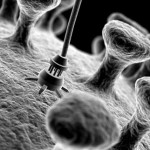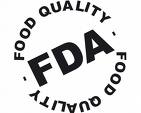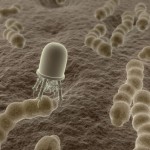
www.h20technologies.com
In the ongoing effort to determine how best to regulate nanotechnology, the first and easiest suggestion is to use existing laws and regulations that were developed for chemicals. Some observers believe that the labyrinth of existing regulations (through FDA, EPA, OSHA, and other agencies) is sufficient to regulate nanotechnologies and nanomaterials that may pose hazards to workers or the public. In a recent report issued by the Government Accountability Office (GAO), the GAO noted that the “use of nanomaterials in products is growing faster than our understanding of the risks these materials pose to human health and the environment” (p. 49)
U.S. Gov’t Accountability Office, Nanotechnology: Nanomaterials are Widely Used in Commerce, but EPA Faces Challenges in Regulating Risk (2010) (report to the Chair, Senate Committee on Env’t and Public Works), available at
http://www.gao.gov/new.items/d10549.pdf
The GAO report indicated that EPA believes it has the authority and ability to regulate manufactured nanomaterials through existing federal statutes, i.e. Clean Air Act, Clean Water Act, RCRA, TSCA, and FIFRA, and that it has the authority to manage cleanups of releases of nanomaterials that may be endangering human health or the environment, pursuant to CERCLA. EPA is currently attempting to work within the structure of these laws to address the potential hazards of nanomaterials, but the GAO report observes that there are significantly greater difficulties in addressing the potential hazards of nanotechnology than in addressing the hazards of conventional chemicals:
● The hazards of nanomaterials vary with the size and shape of the particle.
● Nanomaterials may be more reactive with other chemicals.
● EPA officials say that “it is difficult to assess the risk of nanomaterials that are released into the environment because these materials are so varied and it is difficult to make generalizations about how they will behave once they are released.” (p. 28)
● Only a limited number of studies have been conducted to date on the hazards of nanomaterials, and existing studies on a nanomaterial constructed in one manner may not be relevant to the same nanomaterial constructed in a different manner. In other words, “studies of similar nanomaterials may not be comparable.” (p. 29)
● Many nanomaterials have not yet been studied.
● The scientific community does not currently possess all of the necessary tools, “such as models or measurement technologies” (p. 30), to even characterize or describe the nanomaterials properly, let alone fully understand how the nanoparticles behave.
● Some federal environmental statutes are better suited than others to address the potential hazards of nanomaterials.
This brief summary of the obstacles to effective analysis of the hazards of nanomaterials – and, accordingly, to effective regulation of nanomaterials – raises an important threshold question for the legal, scientific, and regulatory communities:
Will effective regulation come from addressing nanomaterials within the existing statutory framework, which was designed for chemicals and other conventional materials?
This question must be raised, addressed, and vigorously debated. Right now, there is no clear answer to that important question. If a new approach, separate from the approaches used for conventional chemicals, is more likely to result in effective regulation sooner, rather than later, then common sense may dictate going that route. The debate should begin now, not after another decade has passed.


 Recently, the President’s Cancer Panel released its report, “Reducing Environmental Cancer Risk: What We Can Do Now,” which made the bold and distressing statement that “the true burden of environmentally induced cancer has been grossly underestimated.” Currently, there are approximately 80,000 chemicals on the market in the United States many of which are likely carcinogens that are used by most Americans on a regular basis in their daily lives. The risks of these carcinogenic substances have a significantly greater impact on children than adults. The Panel observed that most of these chemicals are “un- or understudied and largely unregulated.” Among other things, the Panel concluded that research on the environmental causes of cancer has taken a back seat to research on the genetic and molecular mechanisms that cause cancer. Research into the environmental causes of cancer has been given low priority and insufficient funding, they say.
Recently, the President’s Cancer Panel released its report, “Reducing Environmental Cancer Risk: What We Can Do Now,” which made the bold and distressing statement that “the true burden of environmentally induced cancer has been grossly underestimated.” Currently, there are approximately 80,000 chemicals on the market in the United States many of which are likely carcinogens that are used by most Americans on a regular basis in their daily lives. The risks of these carcinogenic substances have a significantly greater impact on children than adults. The Panel observed that most of these chemicals are “un- or understudied and largely unregulated.” Among other things, the Panel concluded that research on the environmental causes of cancer has taken a back seat to research on the genetic and molecular mechanisms that cause cancer. Research into the environmental causes of cancer has been given low priority and insufficient funding, they say.

